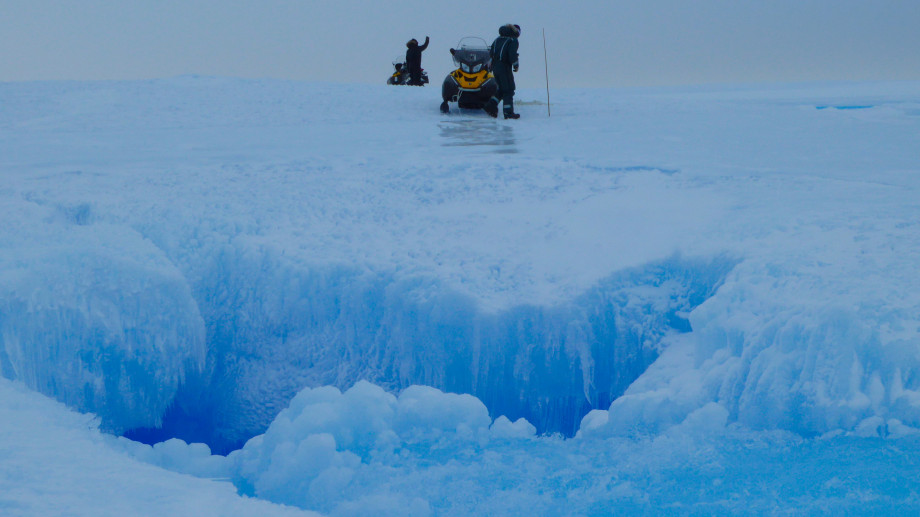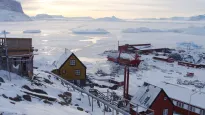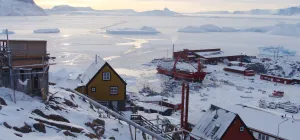Baillet Latour Antarctica Fellow of 2014 publishes in Nature Climate Change

Dr. Jan Lenaerts, recipient of the 2014 Baillet Latour Antarctica Fellowship for his BENEMELT project, has just published some of his research in Nature Climate Change.
Mysterious ‘crater’ on Antarctica indication of vulnerable ice sheet
The East Antarctic ice sheet appears to be more vulnerable than expected, due to a strong wind that brings warm air and blows away the snow. That is the conclusion reached by a team of climate researchers led by Jan Lenaerts (Utrecht University) and Stef Lhermitte (TU Delft), based on a combination of climate models, satellite observations and on-site measurements. Their conclusions will be published in Nature Climate Change on 12 December. “Tens of meters of rising sea levels are locked away in Antarctica”, says Lenaerts. “And our research has shown that also East Antarctica is vulnerable to climate change.”
Current IPCC projections show large uncertainties in Antarctica’s contribution to sea level rise, because the role of ice shelf processes remains uncertain. Lenaerts explains: “Little climate change is observable in East Antarctica, because the area is so isolated from the rest of the world.” However, to the researchers’ astonishment, the ice shelves in some regions of East Antarctica are melting faster than scientists had previously assumed. These ice shelves appear to be extremely sensitive to climate change.
Hotspots
Through a unique combination of field work, satellite data and a climate model, the researchers were able to explain why some parts of the East Antarctica ice shelves are melting so rapidly. This is because the strong and persistent wind transports warm, dry air to the region, and blows away the snow. This darkens the surface, which subsequently absorbs more of the sun’s heat. The result is a local warmer microclimate with a few literal ‘hotspots’. Because the ice shelf is floating in the ocean, its melting does not immediately contribute to sea level rise. However, the ice shelves around Antarctica are extremely important for ice sheet stability, because they hold back the land ice. If the ice shelves collapse, this land ice ends up in the ocean and consequently sea level will rise.
Mysterious crater
Part of the research conducted by Lenaerts and Lhermitte focused on a mysterious crater that was spotted on the King Baudoin ice shelf. “At the time, the media reported that it was probably a meteorite impact crater”, Lenaerts says. “My response was: in that area? Then it’s definitely not a meteorite; it’s proof of strong melting.”
In January 2016, the researchers visited the crater and discovered that it was a collapsed lake, with a moulin – a hole in the ice– which allowed the water to flow into the ocean. Lhermitte: “That was a huge surprise. Moulins typically are observed on Greenland. And we definitely never see them on an ice shelf.” Moreover, the researchers discovered that there were many meltwater lakes hidden under the surface of the ice, some of which were kilometres across. Underwater video images provide a clear image of the amount of meltwater present in the area.
Vulnerable
Is this a sign of climate change? “The crater isn’t new; we found it on satellite images from 1989. The amount of melt water differs immensely from year to year, but it clearly increases during warm years”, according to Lhermitte. Last year, an influential publication showed that Antarctica’s contribution to rising sea levels depends largely on the stability of these melting ice shelves. Lenaerts: “That study indicated that West Antarctica is extremely sensitive to climate change. But our research now suggests that the much larger East Antarctica ice sheet is also very vulnerable.”
This press release is also available in Flemish and French
Publication: http://www.nature.com/nclimate/journal/vaop/ncurrent/full/nclimate3180.html#access
The study was financed by the Baillet Latour Antarctica Fellowship and is a collaborative effort by Utrecht University, TU Delft, KU Leuven, Université Libre de Bruxelles and the Alfred-Wegener-Institute.
The project was supported by the International Polar Foundation and the field work was carried out of the Princess Elisabeth Antarctica Research Station at Utsteinen, East Antarctica.
International Polar Foundation
The International Polar Foundation supports polar scientific research for the advancement of knowledge, the promotion of informed action on climate change, and the development of a sustainable society.
www.polarfoundation.org / www.antarcticstation.org
Baillet Latour Foundation
The Baillet Latour Foundation was established in 1974, on the initiative of Count Alfred de Baillet Latour. Its aim? To promote, encourage and reward excellence, principally in Belgium, by focusing its work on people.
For over 40 years, the Foundation has sought to support initiatives that are remarkable for their influence, the excellence they inspire or their innovative approach to meeting the challenges faced by tomorrow’s society.
Its support generates concrete spin-offs with specific future benefits in four areas: health, education, culture and sport.
Contact the International Polar Foundation:
Joseph Cheek
Project Manager & Communications
joseph.cheek@polarfoundation.org
or
Simon Steffen: ssteffen@polarfoundation.org
Download





















